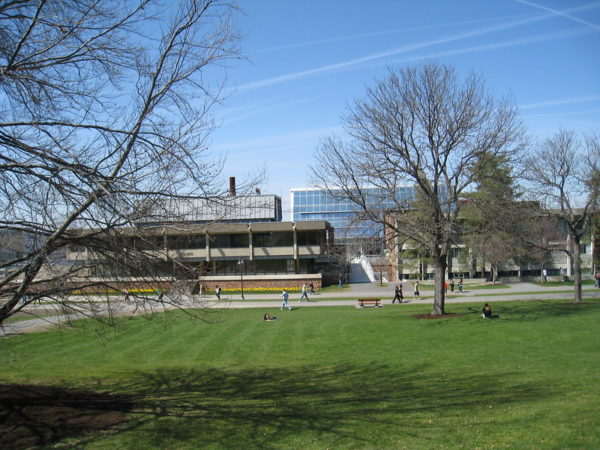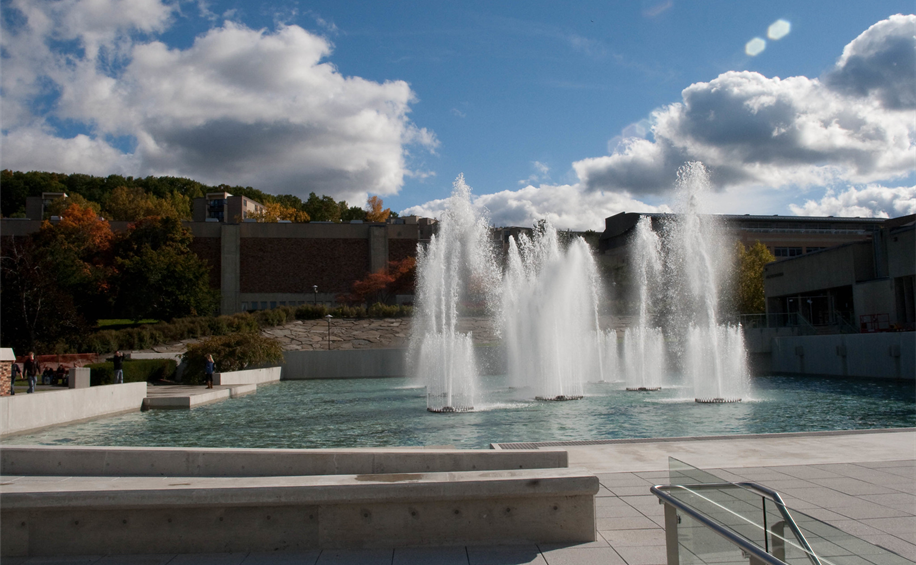It’s bad, really bad, in higher education these days.
Whether the pandemic is over or ongoing, its continuing impact has catapulted colleges and universities into a maelstrom of student disengagement, faculty quiet quitting, outright resignations, and draconian budget cuts.
If you are an instructor at whatever rank or contract status, teaching feels like an increasingly lonely and monastic pursuit.
The halls are empty. Colleagues come in to teach classes and then leave immediately. Very few seem interested in grabbing a cappuccino to catch up and have a little human contact. And with stagnant or reduced salaries, who can afford a cappuccino anyway?
Playing Hooky
I had a long working lunch with a colleague from the Roy H. Park School of Communications at Ithaca College during finals week in December. It was glorious — and unusual.
It was a rare treat to revitalize, refuel, and revive in real time, face-to-face, without an official meeting or an agenda about enrollment and retention problems. We felt like part of an underground cult or secret society as we sat munching Buffalo wings and drinking beer and pinot noir in the afternoon. Playing hooky is good for the soul.

Photo by Yutacar on Unsplash
Gone are the days of generous travel budgets, heated intellectual debate, and eager students excited to live in a world detonated by provocative ideas and obsessive inquiry. Salary increases are a thing of the past. Professors no longer gather for Friday happy hours to gossip, grouse, and grumble. These are phantoms; college life isn’t like that anymore.
A Massive Reset
Almost three years of global pandemic has propelled a massive reset of everything we used to know and do and think.
Streaming services and peak TV have turned the media industries upside down. Movie theaters and concert venues struggle to figure out how to restore the pre-pandemic packed audiences. Health clubs still post signs for social distancing in locker rooms and offer sanitation stations in showers.
There is no going back to normal, whatever that may have meant.
Should we demonize all the changes that have come our way (and those yet to arrive) and simply wait for better days? Is it useful to spend our time pining for some pre-pandemic idyll, real or imagined?
Or should we consider that all this upheaval opens up space for a reset — a radical change in what we do and how we think?
My close friend Zillah Eisenstein, professor emerita, anti-racist feminist activist, and author, has written a lot recently about the need to hope for revolution in the midst of feminist upheavals in Ukraine in the grip of war, Iran with its ongoing feminist rebellion (and the precarity of these brave protestors), and the US with women fighting in the streets, in election booths, online, and in their communities for access to abortion.
Zillah’s rallying cry in emails, over lunch at a pub on Lake Cayuga, and in larger public statements resurrects the C-word that many of us have forgotten: camaraderie.
Wisdom and the Meta Context
Another friend and mentor, Tom Bohn, the former dean of the Roy H. Park School of Communications and a person who follows the changes in higher education propelled by the pandemic with a depth and analysis that evokes the eye-opening acuity of investigative journalism, reminded me over breakfast a few weeks ago about a way of being in the academy that seems to have been lost as the worry over retention and recruitment rachets up.
The pre-pandemic trend of positioning faculty as salespersons and credit-hour generators has increased exponentially as has the transactional nature and function of higher education in general. Tom reminded me that professors need to view our jobs and our roles internally and externally, engaging in a simultaneous shuttle of activity that brings our research and scholarly pursuits to the world and returns with questions and concerns to guide our teaching and writing. This symbiosis renews and enriches everything we do.

Photo by Luke Jones on Flickr
We once brought this continuous interaction between the inside and the outside to our research, classes, curricula, colleagues, and students. As Tom noted the empty halls and offices, he wondered how any fresh ideas for this startling new world of resets and recalibrations could happen when no one meets with anyone in person to debate, discuss, and share ideas
Sotto voce, my professor friends across many upstate New York institutions admit to a vicious and debilitating combat fatigue. They are resisting administrative fiats (mostly unsuccessfully). They feel continuously devalued by a pervasive anti-intellectualism infiltrating their classes, meetings, institutions. They observe the effacement of their work as teachers and scholars/artists both within and beyond the academy. And hardly a day goes by when someone does not mention how their emails have been ghosted.
Some Provisional Survival Tactics
The things that held us together — hope, community, and connection — are seeping out of academia, replaced by a brew of negativity, anger, isolation, and despair. A dispiriting and dangerous abyss.
It is in this volatile morphing context that I’d like to offer some tactics to ameliorate the pervasive ennui, anxiety, and gloom that characterizes many post-pandemic institutions of higher learning.
These are micro in scope — small acts to make small changes.
At the very least they remind us who we were and who we are. The monumental questions of how to rehabilitate higher education as a profession, how to reestablish faculty governance, and how to maintain faculty agency even in a time of crisis, I will leave to others more adept than I at larger institutional issues and strategies.
Inventing New Futures
I hope for a future that includes mass meetings, teach-ins, and demonstrations that could mobilize all of us. To put this hope in context, for the last six months I have attended more demonstrations to protect the right to abortion than for anything related to higher education.
Right now, I would like to propose some scalable and sustainable tactics. My plan does not require any funding or budget. Those two words drift as specters of the past, excised from all but the very elite colleges and universities.

Photo by Aimee Dars Ellis on Flickr
This survival kit moves away from some now normalized pandemic practices in favor of small steps that require making time for people. I think of them as items filling an REI backpack you take on a long hike in the region where you live: little black Moleskine notebooks, a hardy pen, a bottle of water, Ibuprofen, a granola bar, fair trade dark chocolate, sunglasses, a hat, sunscreen, and your hiking poles.
These recommendations I offer here might help to sustain us through these endless crises, but are not the standard strategies of pandemic self-care.
These days, a disturbing trend of intentional disengagement roils beneath the surface of colleges and universities. Faculty limit the hours within which they will be available to answer emails. They stay away from campus between semesters. They secure teaching schedules that minimize time spent on campus. And they schedule as much as possible on Zoom to avoid face-to-face interactions.
However necessary, these pandemic practices beget alienation and isolation.
Academic Austerity Survival Kit
What follows are some small ways to build connection and community even at a distance.
1. Write thank you and congratulatory notes to colleagues. Paper is fun. It’s the antidote to waterfalls of emails.
2. When in despair, meet up in person with a colleague. When a colleague is despondent, call them. Don’t just email or text. Call. Interact ear-to-ear if not face-to-face — in real time.
3. Treat staff well in whatever ways you can: notes, small gifts, time spent chatting. They’re stuck on campus more than you are — remember that and be kind.
4. Build and nurture your connections beyond the institution. Do not depend on the institution to nourish you. They are just trying to survive. So you need to do it yourself. And with others even if they’re far away.
5. Write. Do research. Make Art. Perform. Create. Debate. Collaborate. They can’t take that away from you.
6. Offer your professional expertise or just your time to the community. Volunteer or join a board.
7. Connect with friends who are not academics. They will help purge the solipsism, myopia, and hysteria that undulates through the academy. They will remind you that other worlds have a lot to offer.
8. Listen. Ask questions. Be curious. Open yourself to what others have to say. Don’t pontificate or give advice — it’s a new world, and we’re all learning to live in it.
9. Immerse in the larger world. Read the news — local, national, and international. It will give you perspective.
10. Read. People have always transcended the boundaries of place with reading. Read in your discipline. Read novels, poetry, nonfiction, biographies, the news. Take a break from tweets, doom scrolling, and binge-watching!
11. Think about what is doable and sustainable. Battles and wars are often lost but sharing your own analysis in your own language rather than a bowdlerized version in administrative Esperanto shifts the discourse just a millimeter, and that matters.
12. Dispose of the fantasy that academic life is better elsewhere, somewhere more prestigious with higher salaries, smaller teaching loads, and more respect for faculty research. Those places do not exist.
13. Live in big ideas and debates. Let them consume you and yank you away from your office and gossip about the next wave of downsizing and cutbacks.
14. Embrace the Five C’s: Camaraderie, collaboration, connection, cocreation, and conspiring with comrades. Demonstrate and agitate in person whenever you can and are needed.
15. Show up. In person. Support your colleagues. Put your body where your heart and soul need to be. With others.
Patricia R. Zimmermann is the Charles A. Dana Professor of Screen Studies and Director of the Finger Lakes Environmental Film Festival at Ithaca College in Ithaca New York. The author or editor of ten books, her most recent are “Documentary Across Platforms: Reverse Engineering Media, Place, and Politics” (Indiana 2019) and “Flash Flaherty: Tales from a Film Seminar” (Indiana, 2021). She is Editor-at-Large of The Edge.
Header photo by paul_houle on Flickr.

